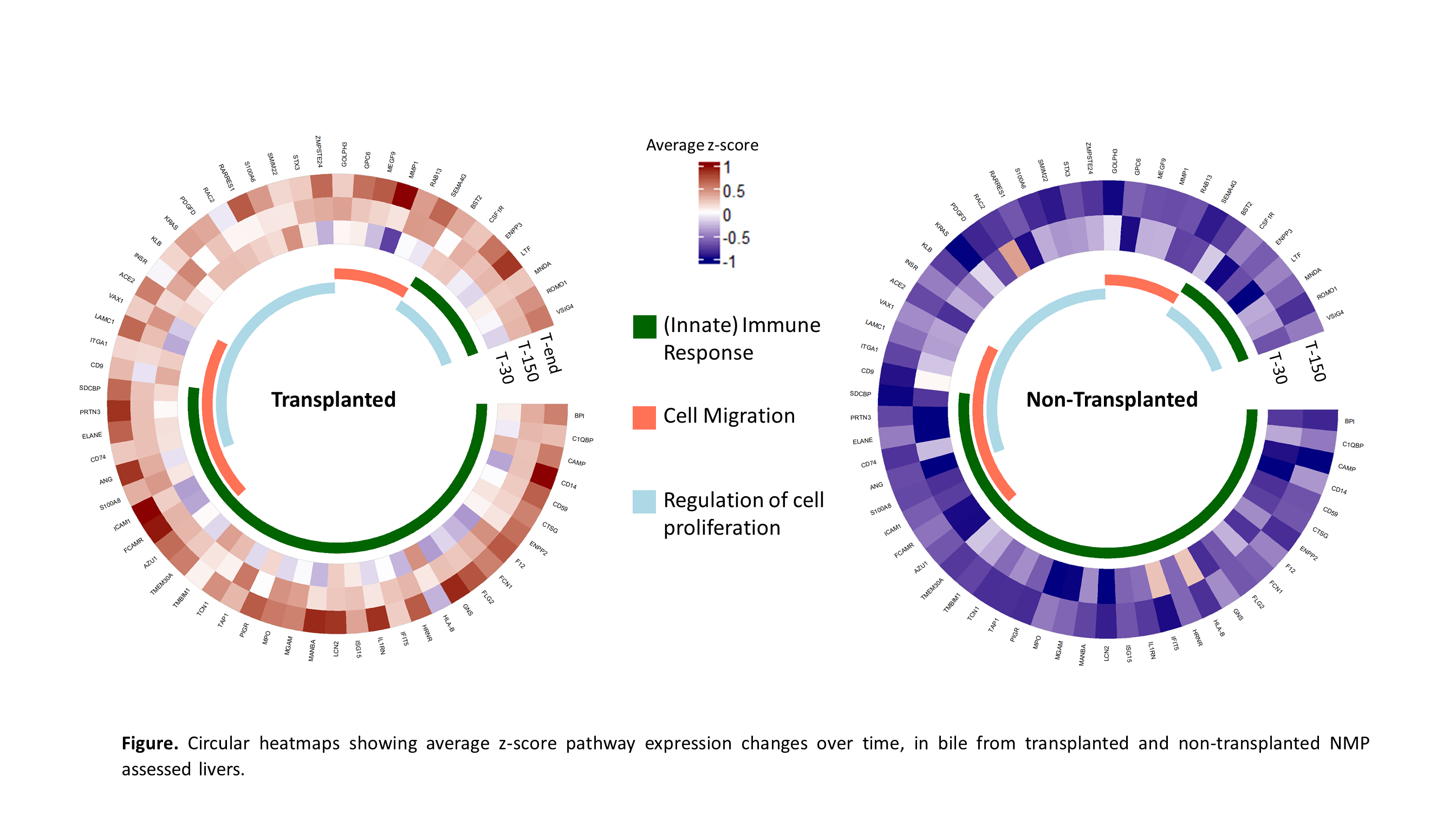Proteomic Profiling of Bile from Human Livers Undergoing Viability Assessment via Normothermic Machine Perfusion Prior to Transplantation
1University Medical Center Groningen, Groningen, Netherlands, 2University of Groningen, Groningen, Netherlands
Meeting: 2022 American Transplant Congress
Abstract number: 474
Keywords: Liver transplantation, Perfusion, Prediction models
Topic: Basic Science » Basic Science » 16 - Biomarkers: -omics and Systems Biology
Session Information
Session Name: Biomarkers: -omics and Systems Biology
Session Type: Rapid Fire Oral Abstract
Date: Tuesday, June 7, 2022
Session Time: 3:30pm-5:00pm
 Presentation Time: 3:50pm-4:00pm
Presentation Time: 3:50pm-4:00pm
Location: Hynes Room 304 / 306
*Purpose: Normothermic machine perfusion (NMP) has gained increasing traction as a method to assess the viability of high-risk donor livers. To avoid post-transplant biliary complications, cholangiocellular viability is currently assessed by point-of-care analysis. The aim of this study was to investigate the underlying, subclinical molecular changes in bile of NMP assessed livers through an in-depth proteomics analysis.
*Methods: Bile samples from 30 NMP perfused livers were collected at 30mins after start NMP (T-30), at viability assessment after 150mins (T-150), and at the end of perfusion (T-end; 17 transplanted livers only). Proteins were prepared using in-gel digestion and analyzed using label-free data-independent acquisition (DIA) quantitative proteomics (LC-MS/MS).
*Results: A total of 77 samples were analyzed, from which 2350 unique proteins were identified. Longitudinal analysis of bile samples revealed 432 and 207 significantly expressed proteins (p<0.05, >2-fold change) between T-30 vs T-150, and T-150 vs T-end, respectively. String pathway analysis at T-150 shows an upregulation of proteins associated with cellular migration, differentiation and immune responses, and downregulation of intracellular and organelle proteins. Pathway analysis at T-end shows an increase of carbohydrate and lipid metabolism, tissue development and cellular signaling processes, with very few downregulated proteins. Analysis of transplanted vs non-transplanted livers at T-150 identified 206 significantly expressed proteins, with transplanted livers showing upregulation of cellular proliferation, migration and immune response proteins (Figure). ROC analysis identified 4 of these proteins to have a combined AUC of 0.986 at T-150.
*Conclusions: This is the first comprehensive proteomics analysis of bile from human NMP perfused livers. Our analysis highlights large and significant protein changes both over time and between transplanted vs non-transplanted livers. Proteins associated with immune responses, cellular proliferation, and migration upregulated in transplanted livers may suggest a higher cholangiocellular functional and regenerative capacity following the injury associated with warm (re)perfusion after SCS.
To cite this abstract in AMA style:
Thorne AM, Wolters JC, Kuipers F, Porte RJ, Meijer VEde. Proteomic Profiling of Bile from Human Livers Undergoing Viability Assessment via Normothermic Machine Perfusion Prior to Transplantation [abstract]. Am J Transplant. 2022; 22 (suppl 3). https://atcmeetingabstracts.com/abstract/proteomic-profiling-of-bile-from-human-livers-undergoing-viability-assessment-via-normothermic-machine-perfusion-prior-to-transplantation/. Accessed December 18, 2025.« Back to 2022 American Transplant Congress

